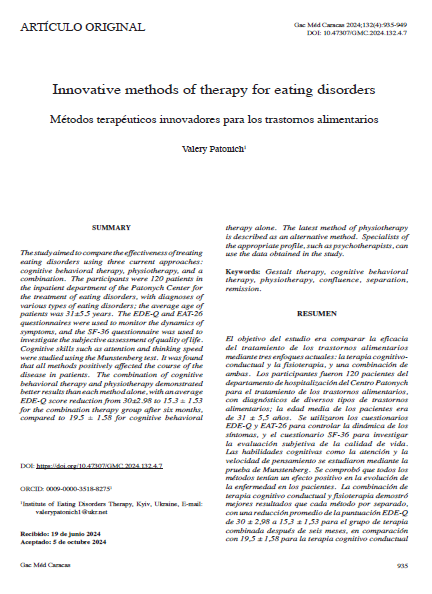Innovative methods of therapy for eating disorders
Contenido principal del artículo
Resumen
The study aimed to compare the effectiveness of treating eating disorders using three current approaches: cognitive behavioral therapy, physiotherapy, and a combination. The participants were 120 patients in the inpatient department of the Patonych Center for the treatment of eating disorders, with diagnoses of various types of eating disorders; the average age of patients was 31±5.5 years. The EDE-Q and EAT-26 questionnaires were used to monitor the dynamics of symptoms, and the SF-36 questionnaire was used to investigate the subjective assessment of quality of life. Cognitive skills such as attention and thinking speed were studied using the Munstenberg test. It was found that all methods positively affected the course of the disease in patients. The combination of cognitive behavioral therapy and physiotherapy demonstrated better results than each method alone, with an average
EDE-Q score reduction from 30±2.98 to 15.3 ± 1.53 for the combination therapy group after six months, compared to 19.5 ± 1.58 for cognitive behavioral therapy alone. The latest method of fissiotherapy is described as an alternative method. Specialists of the appropriate profile, such as psychotherapists, can use the data obtained in the study.
Descargas
Detalles del artículo

Esta obra está bajo una licencia internacional Creative Commons Atribución-NoComercial 4.0.
